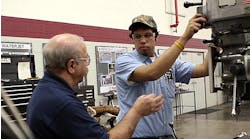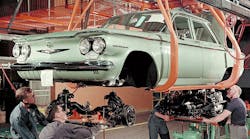Each day I’m made aware, again, and to my increasing dismay, how little I can trust my past assumptions about the world and our lives here. It’s no longer enough to remark how strange and unsettling is the news we are served from day to day, or hour to hour. Accepting new ideas or changes in facts can be difficult and frustrating, but I’ve learned this much: it’s even more difficult to unlearn that which we have believed and accepted as truth.
A more perfect creature would simply adapt its understanding, but humans are endowed with memory, and memory frequently fills the role of understanding, so that when we are presented with new information we can reflexively deny the truth of something that is plain to see.
Thus, when it’s reported that U.S. economic growth was “unexpectedly … tepid” (Reuters) in the second quarter of 2016, with business inventories falling and capital investment continuing to decline, business reporters and the economists they quote resort once more to the prospect of strong consumer spending to kindle new economic growth.
Of course, no subject is too serious to be mangled and distorted for political advantage: they have to get beyond our reasoning, into our feelings, in order to stimulate a response. So, we must listen again and again to the litany of our economic victimhood: foreign trade agreements have suffocated domestic manufacturing, wasting our natural advantages and selling out workers; more government funding of research and technology must be authorized; and more “infrastructure” spending must be implemented, to stimulate capital investments.
If many people didn’t really believe these things they would not have endured for so long, and yet the evidence shows none of it is accurate.
The number of manufacturing jobs in the United States has been falling since the 1970s, and yet U.S. manufacturing operations (and their workers) are producing more goods and materials of greater value than ever before. U.S. manufacturing is not a commodity-grade sector: these are high-value goods, and the employees in these businesses must be counted as high-tech workers. In the past two decades, a time when trade deals like NAFTA and the current WTO have been in place, we have seen inflation-adjusted U.S. manufacturing output increase nearly 40%. U.S. manufacturing’s annual contribution to GDP is now a record-high $2.4 trillion.
Likewise, we’ve seen for decades that federal subsidies and stimulus spending are tricks for financial management, not promoting economic growth.
These details are not hard to document, and yet they do not penetrate the general understanding because we are accustomed to believing some alternative, nostalgic picture about manufacturing. That image — the industrial business that was a solid portfolio investment; the factory in town that employed a thousand workers or more, and paid well with good benefits— is too cherished to let go. And yet, if such a business existed today, would we tolerate its environmental standards, it’s workplace practices? Would you buy it’s stock, or would you tell your advisor to buy Amazon?
The world that presents us with so much anxiety and frustration is the same world that we rather like, for our own purposes. It’s a world in which education and entertainment vie equally for our attention, though some like me would prefer a bit less emphasis on the latter. Our society is one in which generosity and tolerance are celebrated as social and personal virtues, though some like me would prefer a bit more reverence and a bit less licentiousness. Our time is one in which we have the means and the skills to identify our own priorities and, with ingenuity and dedication, to act on them.
I would like to live long enough to see a time when personal priorities are not merely hooks for marketers and politicians to secure our commitment to their products or causes. We may be moving in that direction, but who knows? And what will we take as proof that we have arrived at such an idealized existence?
You see, to overcome our disappointments and anxieties we have to make a choice between what is good and what is perfect. We believe we know the latter, from memory, from our imaginations, and from the messages and arguments of those who’d persuade us (in that way, to achieve their own sense of perfection.) But if there is any lesson to draw from the daily shocks we endure, it is that things that signify perfection — wealth, beauty, power, influence, serenity — are impermanent by nature. There has to be something within us other than memory and desire to guide us to progress. Call it, awareness.









